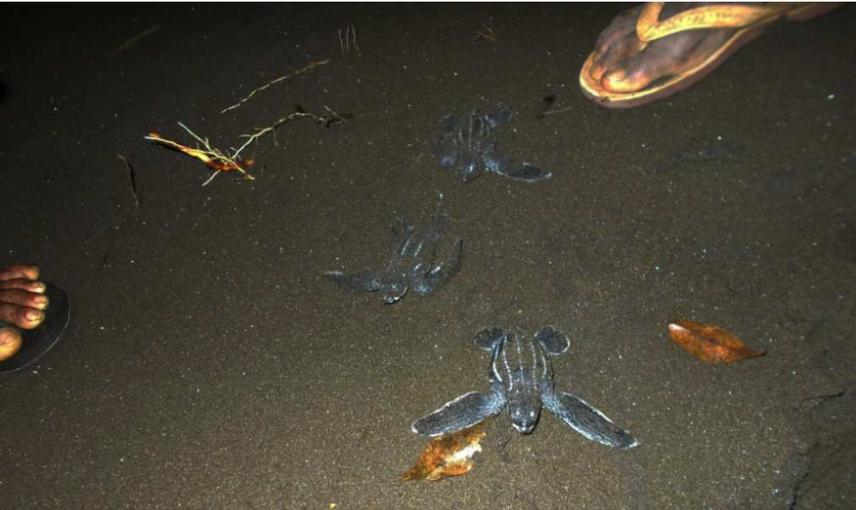James Chantrey Williams
Other projects
23 Apr 2015
Capacity Building in the Solomon Islands to Enhance Leatherback Sea Turtle Conservation (Year II)
The overall long-term goals of this project are to enhance leatherback turtle conservation, and raise local community’s understanding and appreciation of the value of the species.

Populations of Leatherback Turtles have declined in the Pacific, to the point where they are critically endangered (IUCN). Key pressures include the slaughter of adult turtles, bycatch and collection of eggs. Leatherbacks are fully protected in the Solomon Islands, but outreach efforts across the vastly spread-out island chain are limited. For this reason we develop community-based mechanisms, as these are more effective at integrating the full community and reducing overall pressures on the population. By increasing hatchling production through these conservation efforts, we work to restock the leatherback population and promote recovery, while respecting the aspirations of local communities.
This new project will expand the scope of The Marine Research Foundation’s (MRF) successful community-based leatherback turtle conservation project in Papua New Guinea (operating since 2005) to impact the Leatherbacks summer nesting sites in the Solomon Islands, as these are otherwise lacking of conservation activities. These summer nesters are previously unstudied and believed to be genetically distinct from the winter nesters, a research question our work will help address in collaboration with scientists at NOAA.
To implement our community based leatherback conservation project key activities consist of:
i) Community education and training sessions regarding turtle evolution and biology general ecology, and an introduction to the value of turtles and other regional conservation projects.
ii) Election of Turtle Rangers and a Project Leader from members of the local community by the local community.
iii) Additional education and training sessions with Turtle Rangers and Project Leader; developing skills required for night time monitoring, data collection and PIT Tag application.
iv) Identifying recording the location of individual turtle nests on a daily basis using handheld GPS.
v) Opportunistic application of PIT Tags to turtles at night once nesting has been completed. This provides the animal with a ‘barcode’ giving the opportunity to monitor individual nesting activity and growth rate for life.
vi) Marking nests and protection using a bamboo grid. This prevents dogs from digging up nests to eat eggs and deters human ‘poachers’ from removing eggs. It also instills a sense of pride and ownership of nests within the community.
vii) A Community incentive fund which can be accessed by the Wairaha community to pay for materials and services that will benefit the Village as a whole, such as education materials, health services, etc.